


SAMUEL PEPYS 1633 -
Acknowledgements
Pepys: by the English portrait painter John Hayls (c1600-
Including:
John Evelyn
and Madame
de Sévigné

xxxxxThe Englishman Samuel Pepys is well known for his Diary, a vivid account of affairs, begun in January 1660. It covers the major historical events, including the Restoration, the Plague and the Great Fire of London, as well as giving a frank account of his own life and feelings over the next nine years. He worked in the Navy Office in London and, by dint of hard work, became secretary of the Admiralty in 1672, initiating much-
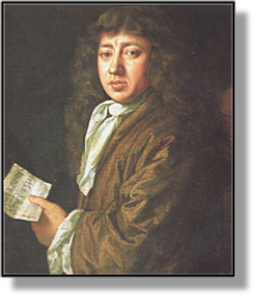 xxxxxThe Englishman Samuel Pepys, so well known for his Diary, was born in London, the son of a tailor. He attended St. Paul's School, and then studied at Magdalene College, Cambridge. On returning to London, he worked as a clerk in the Exchequer for a year, and then in 1660 obtained service in the Navy Office, working as "clerk of the King's ships". By dint of his ability and hard work he quickly rose to high office, being appointed secretary of the Admiralty by Charles II in 1672. In this position he introduced some much-
xxxxxThe Englishman Samuel Pepys, so well known for his Diary, was born in London, the son of a tailor. He attended St. Paul's School, and then studied at Magdalene College, Cambridge. On returning to London, he worked as a clerk in the Exchequer for a year, and then in 1660 obtained service in the Navy Office, working as "clerk of the King's ships". By dint of his ability and hard work he quickly rose to high office, being appointed secretary of the Admiralty by Charles II in 1672. In this position he introduced some much-
xxxxxBut his success in office, and, above all, his insistence on efficiency and honesty, made him powerful enemies. In 1679 his career was seriously interrupted when he was implicated in the Popish Plot (conjured up by Titus Oates), and imprisoned in the Tower of London. He was acquitted and reinstated in 1684, but he was then alarmed to find that the navy was near to ruin. During his time in prison, 76 ships had been reduced to 24, and 12,000 men had dwindled to 3,000, with the majority of those on the point of mutiny through lack of pay. It was due to Pepys' direct appeal to both Charles II and James II, and his own untiring efforts, that within three years a well-
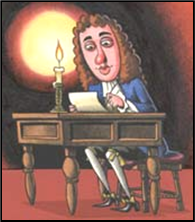 xxxxxHe began writing his famous Diary on 1st January 1660, and made daily entries for the next nine years. Apart from being a unique and gripping record of the historical events of that period -
xxxxxHe began writing his famous Diary on 1st January 1660, and made daily entries for the next nine years. Apart from being a unique and gripping record of the historical events of that period -
xxxxxThe diary was written in shorthand (that devised by Thomas Shelton in 1626) in case it fell into the wrong hands, and was not in fact deciphered until 1825. Pepys bequeathed the original manuscript -
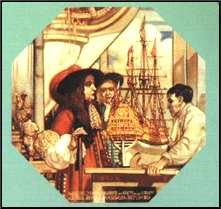
xxxxxIn the latter part of his career Pepys, as chief administrator of the Navy, was one of the most important and well-
xxxxxIncidentally, in 1659, when Pepys worked as a clerk in the Exchequer, he found himself in the office of one of the tellers called George Downing (1623-
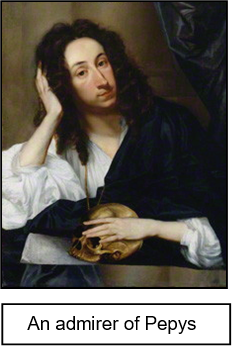 xxxxxOne of Pepys’ life-
xxxxxOne of Pepys’ life-
xxxxxHis own diary, written over the years 1641 to 1706, was discovered in 1817 and published the following year. A wealthy country gentleman, Evelyn had a wide circle of friends, many of whom were distinguished in public life, so his work provides a store of information about life in 17th century England. Like Pepys' work, it contains useful character studies, and many valuable descriptions of contemporary events, but it has much less personal detail and, as a piece of literature, is not so attractive and accomplished in style.
xxxxxHe was born of a wealthy family in Dorking, Surrey, and studied law in London and Oxford, but on completion of his studies he devoted his time to horticulture, improving the grounds of the family estate at Wotton House. Although a firm Royalist, when the civil war broke out in 1642 he decided not to join the king's cause openly for fear of reprisals against his family. He thus spent the war years travelling in France and Italy. By the early 1650s he was back in England, working on the gardens of his home at Sayes Court, Deptford, London.
xxxxxFollowing the Restoration he was one of the founder members of the Royal Society, and served on a number of commissions, including those concerned with the improvement of London streets, the workings of the Royal Mint, and the proposed repair of St. Paul's Cathedral. It was while a member of one of these commissions -
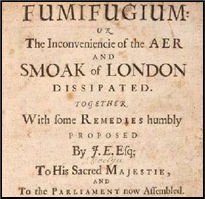 xxxxxApart from his interest in daily events, Evelyn was a man of great curiosity, and wrote about 30 books on a wide range of subjects, including horticulture, religion, history, the fine arts, architecture and the law. He produced two somewhat unusual works for his time. The first, Fumifugium, published in 1661 and subtitled The Inconvenience of the Air and Smoke of London Dissipated, must surely be seen as one of the earliest attempts to tackle the problem of air pollution. The second, Sylva, a textbook on the cultivation of trees, was produced for the Navy in 1664, and included a call for reforestation. He also wrote a touching biography on the Life of Mrs Godolphin, a lady whom he had known earlier when she was a maid of honour at court.
xxxxxApart from his interest in daily events, Evelyn was a man of great curiosity, and wrote about 30 books on a wide range of subjects, including horticulture, religion, history, the fine arts, architecture and the law. He produced two somewhat unusual works for his time. The first, Fumifugium, published in 1661 and subtitled The Inconvenience of the Air and Smoke of London Dissipated, must surely be seen as one of the earliest attempts to tackle the problem of air pollution. The second, Sylva, a textbook on the cultivation of trees, was produced for the Navy in 1664, and included a call for reforestation. He also wrote a touching biography on the Life of Mrs Godolphin, a lady whom he had known earlier when she was a maid of honour at court.
xxxxxIncidentally, whilst living at Sayes Court, Evelyn met Grinling Gibbons, who, after a childhood in the Netherlands had returned to England and was living at Deptford. By all accounts, Evelyn helped the talented young craftsman to establish himself as a woodcarver, thus setting him upon his brilliant career.
xxxxxJohn Evelyn (1620-
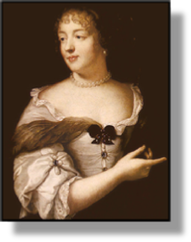 xxxxxThough not in the form of a diary, the letters of the French writer Madame de Sévigné (1626-
xxxxxThough not in the form of a diary, the letters of the French writer Madame de Sévigné (1626-
xxxxxIt was in 1671, soon after her daughter, Françoise Marguerite, had married and moved away from Paris, that she started up her famous correspondence. Over the next seven years or so she wrote more than 1,600 letters, the vast majority to her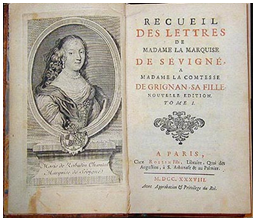 daughter. In a witty, spontaneous, and intimate style, she passed on current gossip and events in fashionable society, commented on everyday topics, gave shrewd portraits of prominent people (such as Corneille and Racine), or just rattled on about her own domestic routine. Some of the topics were amusing, some serious, some mundane, but very few lacked a measure of interest. But it was not so much what she said in the letters, as the charming, informal way in which she said it that has earned her a place in French literature. The letters -
daughter. In a witty, spontaneous, and intimate style, she passed on current gossip and events in fashionable society, commented on everyday topics, gave shrewd portraits of prominent people (such as Corneille and Racine), or just rattled on about her own domestic routine. Some of the topics were amusing, some serious, some mundane, but very few lacked a measure of interest. But it was not so much what she said in the letters, as the charming, informal way in which she said it that has earned her a place in French literature. The letters -
xxxxxThe letters of the French writer Madame de Sévigné (1626-
C2-


